When it first appeared Roman Polanski’s Tess (a 1979 release that didn’t hit U.S. screens till Christmas of 1980) was an event and no mistake. It was a big production — and based on a highly-regarded classic of literature, Thomas Hardy’s Tess of the Durbervilles — it was so big, in fact, that its running time (right at three hours) made it one of the last general release films to have an intermission. But beyond that, it was Polanski’s first film since he fled the U.S., making it an object of great interest and raising the question of how audiences would respond. And even without that, Polanski hadn’t had a hit since Chinatown in 1974. They needn’t have worried. The film was successful — especially for a lengthy period drama — and to box office, and it garnered Oscar nominations for Best Picture, Best Director, Best Original Score, Best Cinematography, Best Art Direction, and Best Costume Design. (And those are only its Academy accolades.) In the end, it won three — cinematography, art direction, costume design. That any other film could have won for cinematography was unthinkable. Whatever else can be said about Tess, it is quite probably the most beautiful color film ever made. And for that matter, it might just be the best film Polanski has made.
As is often the case with a filmmaker one admires greatly, I am never entirely sure which Roman Polanski film gets the accolade of “best” from me. There are at least five contenders, but the one that I keep coming back to — even though I haven’t seen it on the big screen since 1980 — is Tess, which is arguably also his most restrained work. Here is a story that contains both rape and murder, and yet it came in with a PG rating. Those two key events are hardly shown. The murder in fact takes place entirely offscreen and results themselves are only shown by blood seeping through the ceiling of the room below. Yet the film never feels reticent. Its emotions — and even its outrage at the injustices of Victorian society — are always in evidence, and its tragic story is always compelling.
The film is a reasonably faithful adaptation of Hardy’s novel about Tess Durbeyfield (Nastassia Kinski), a young peasant girl whose father, John (John Collin), gets hold of a piece of information from a meddlesome antiquarian parson (Tony Church) that will ultimately seal her fate. The parson has realized that the Durbeyfields are actually d’Urberviles, the last — sadly degenerated — descendants of an ancient and noble family. Confirming this (more or less) by the presence of the family crest on an old spoon, the greedy, none-too-bright and even less sober Durbeyfield has dreams of riches — especially when he learns that rich d’Urbervilles live nearby. Convincing the rest of the family that Tess should call on them and “claim” kin, the hapless girl is sent on this mission. Already reluctant to undertake this task, Tess becomes even less sure of the idea when she realizes that everything the d’Urbervilles have — including a gigantic mansion — is new. Just as she’s ready to turn around, she meets Alec d’Urberville (Leigh Lawson) — an obvious womanizer, who takes an immediate fancy to Tess, pays her unwanted attention and tries to ply her with food and gifts.
He fully realizes there is no kinship — his social-climbing family bought the name — but proposes to help her anyway, which leads to Tess being employed on the family’s poultry farm. Of course, it’s all a ploy to seduce the girl. What results isn’t so much seduction (though it would have been called that in that era and any guilt placed on the girl) as it is rape. Even though Tess makes an unenthusiastic stab at being Alec’s mistress, she’s incapable of dealing with, and goes home, where she bears Alec’s illegitimate son, who dies soon after. Determined to make her own way in the wider world where her past is unknown, Tess sets out to make a new life for herself — something that becomes complicated when she falls in love with a young man, Angel Clare (Peter Firth), whom she first saw years earlier at the dance that opened the film. The problem in her mind is whether or not to tell him of her past.
That’s the crux of the story — the first part of it anyway — but it does nothing to convey the deep beauty of the film on so many levels. Events that are so charming or heartbreaking, and images that cut to your very soul abound — and are burned into the viewer’s brain. It’s one of those rare films that you seem less to watch than to inhabit. You feel you’ve lived the film more than merely have seen it. One scene — involving the most brilliant use of lens flare I’ve ever seen — where Tess retrieves a letter she’s written to Angel is among the most incredible moments I’ve ever witnessed in a movie. But it’s hardly the only such. The immersion into the world of Tess is there from the very first scene at the country dance at the end of the day in the fading light, and it never really lets up. Everything about it is just stunning, including the three central performances. Kinski (who here sometimes resembles the young Ingrid Bergman), Firth, and Lawson have never given the performannces they do here in anything else — nor have they ever been afforded such roles. For that matter, composer Philippe Sarde has never before or since been given anything so quietly beautiful to score.
Tess finds the filmmaker in a mellow mood overall — probably a reflective one. It was the first film Polanski made where he felt comfortable enough — and the film apppropriate enough — to dedicate to his late wife Sharon Tate (the film simply reads, “To Sharon”), who was murdered in 1969 by members of the Manson Family. This also strongly suggests that Tess was a deeply personal work — that he perhaps saw something of Tate in the story’s ill-fated heroine. It’s also difficult not to think that there are some other personal demons being worked out here when you consider that Tess is a victim of society and that it is her life that has been forever marked by the man who raped her, not the man’s. I don’t think it’s in the least confessional, but the element is certainly there.
It cannot have been a lightly taken work. Considering Polanski’s legal status, there was no way he could make the film in England where the story is set. It fell to him and the production designers to recreate Victorian England in France. This recreation included finding a coastal town that looked like an English seaside resort. More ambitiously still, since the story has to conclude as the novel did in order to carry the sense of Tess as a kind of sacrificial victim to Victorian society, it was necesary to create nothing less than Stonehenge on a plain in France. (At the time, Polanski claimed this was actually better because Stonehenge was considerably changed since Tess’ time.) But it all paid off beautifully. Polanski had made great films before. He would go on to make some more. However, Tess is unique. Its lyrical beauty is not quite like anything else in his oeuvre, and yet it is so clearly his work. It is truly a special kind of masterpiece — one that can only be truly appreciated on the big screen.
The Asheville Film Society is showing Tess Wednesday, Aug. 27, at 7:30 p.m. at The Carolina Asheville as part of the Budget Big Screen series. Admission is $6 for AFS members and $8 for the general public.


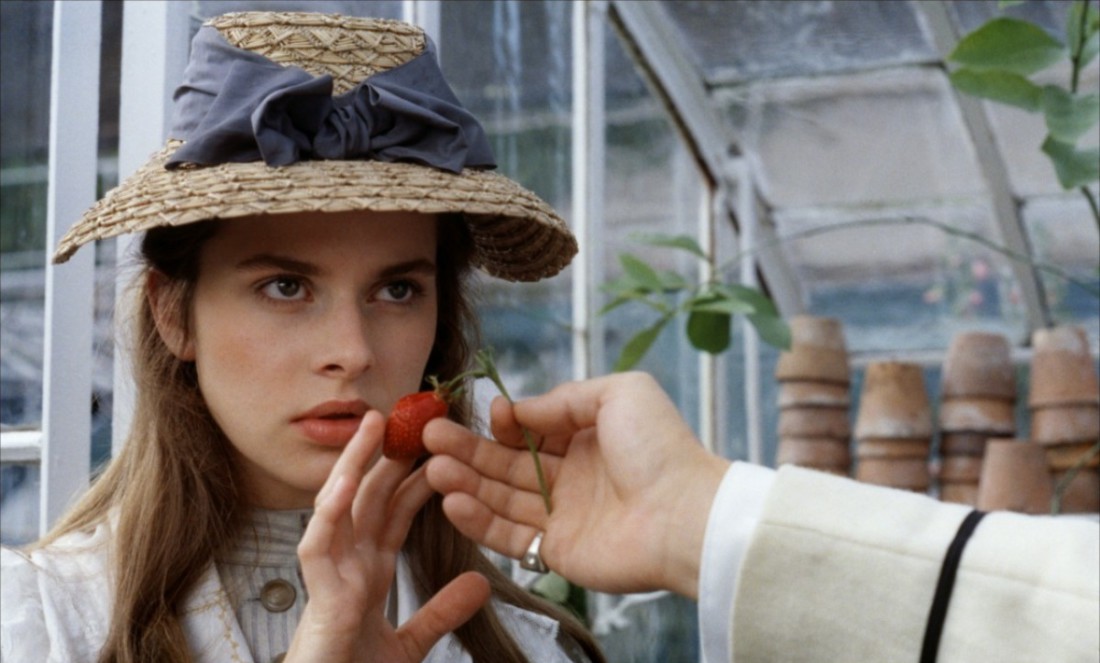
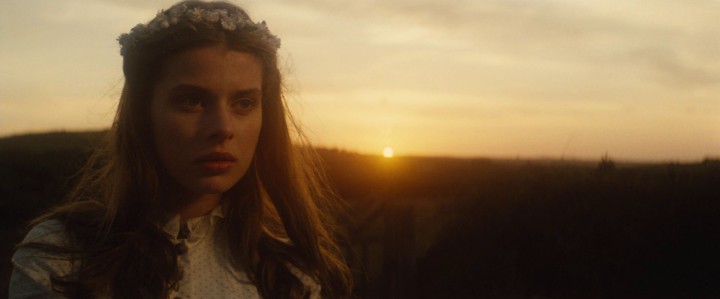
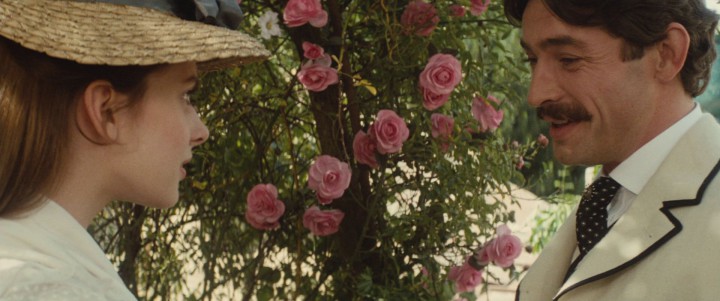
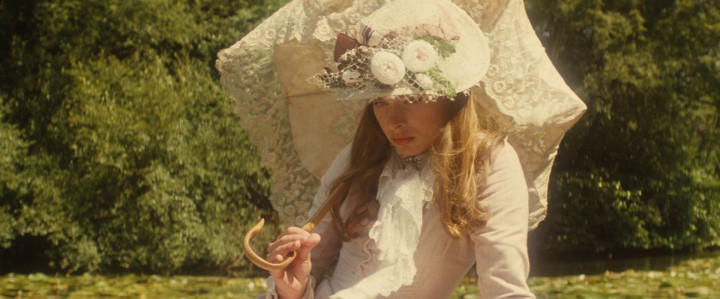
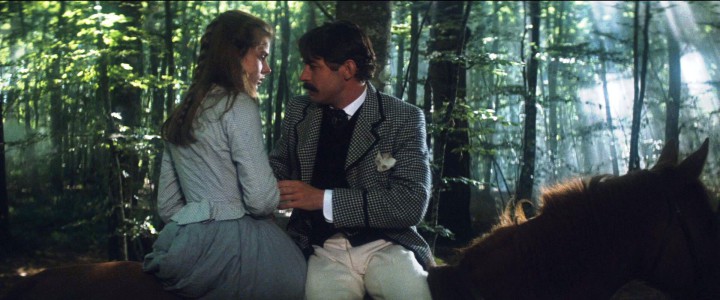
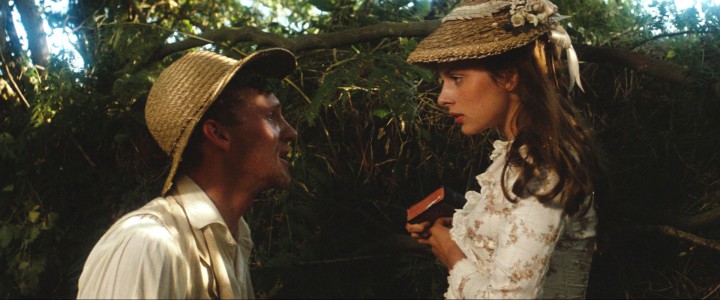
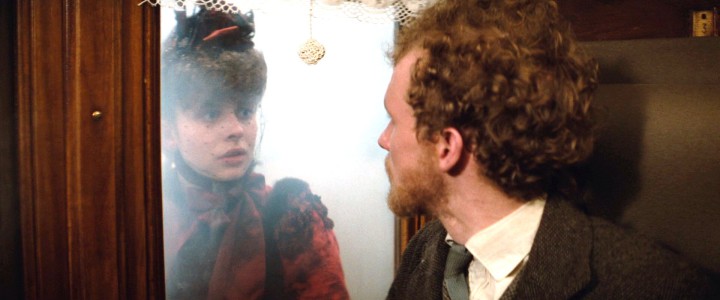
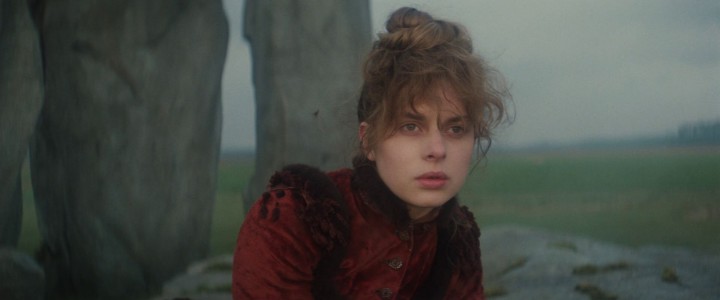
Excited to see this one. I’ve been holding out tracking it down on DVD on the chance that you’d run it.
I’ve not read the novel and the only adaptation I’ve seen is Michael Winterbottom’s “never did end up playing here” Trishna, which I liked but didn’t love. Hoping that the Polanski factor will help me get over whatever issues I have with the material.
Will there be an intermission?
An intermission depends on if it’s built into the DCP, I imagine. I can’t remember where it occurs, but most likely looking place on the Blu-ray is just before the third hour.
Was there one with the original theatrical release?
Yes. Read the review!
I’m abstaining until I see the film.
Flapdoodle.
You know how I operate.
Bumblepuppy.
Is that one of those cross-breed dogs that resemble bees?
You need to read more Aldous Huxley and be better versed in your Preston Sturges movies.
Whatever else can be said about Tess, it is quite probably the most beautiful color film ever made.
Those screenshots certainly suggest this. I think it’s finally time for me to see this.
The framegrabs scarcely do it justice.
Have you guys ever showed The Tenant?
We showed it at the THPS in 2012. But that’s a different animal. I doubt that THE TENANT is available on a DCP, though I admit I’ve never asked.
Truly gratifying turnout and response to Tess last night — and I had had doubts about it breaking even. Once more I am no oracle of what people will show up for. Audiences continue to surprise me. And I kind of like that…sometimes.